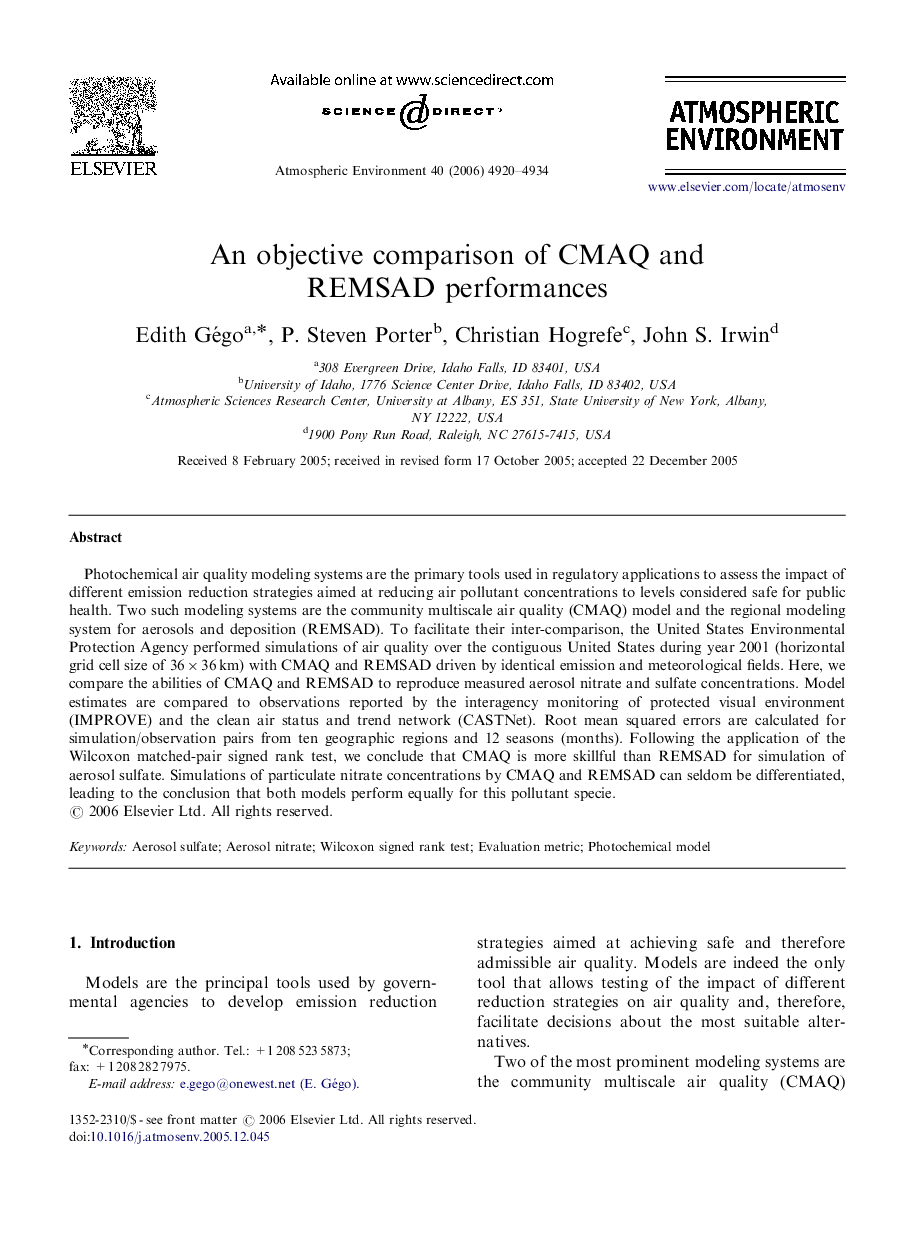| Article ID | Journal | Published Year | Pages | File Type |
|---|---|---|---|---|
| 4444493 | Atmospheric Environment | 2006 | 15 Pages |
Photochemical air quality modeling systems are the primary tools used in regulatory applications to assess the impact of different emission reduction strategies aimed at reducing air pollutant concentrations to levels considered safe for public health. Two such modeling systems are the community multiscale air quality (CMAQ) model and the regional modeling system for aerosols and deposition (REMSAD). To facilitate their inter-comparison, the United States Environmental Protection Agency performed simulations of air quality over the contiguous United States during year 2001 (horizontal grid cell size of 36×36 km) with CMAQ and REMSAD driven by identical emission and meteorological fields. Here, we compare the abilities of CMAQ and REMSAD to reproduce measured aerosol nitrate and sulfate concentrations. Model estimates are compared to observations reported by the interagency monitoring of protected visual environment (IMPROVE) and the clean air status and trend network (CASTNet). Root mean squared errors are calculated for simulation/observation pairs from ten geographic regions and 12 seasons (months). Following the application of the Wilcoxon matched-pair signed rank test, we conclude that CMAQ is more skillful than REMSAD for simulation of aerosol sulfate. Simulations of particulate nitrate concentrations by CMAQ and REMSAD can seldom be differentiated, leading to the conclusion that both models perform equally for this pollutant specie.
